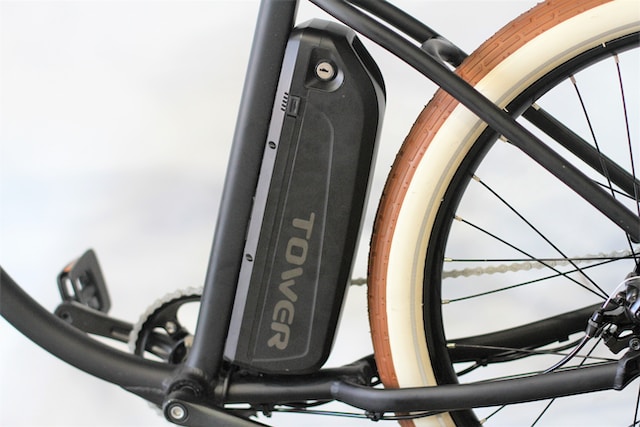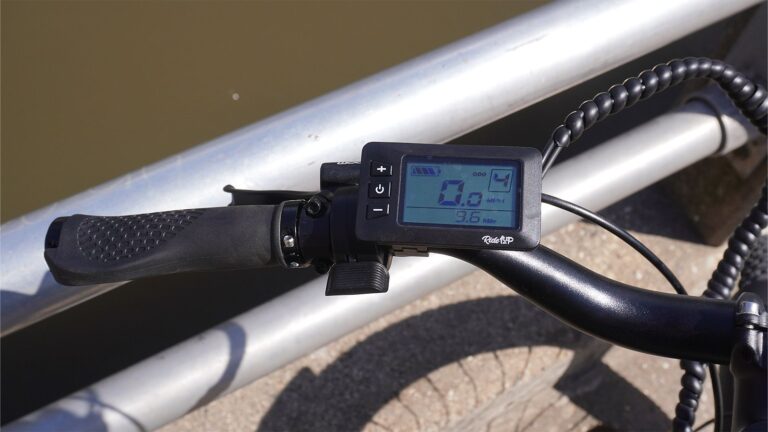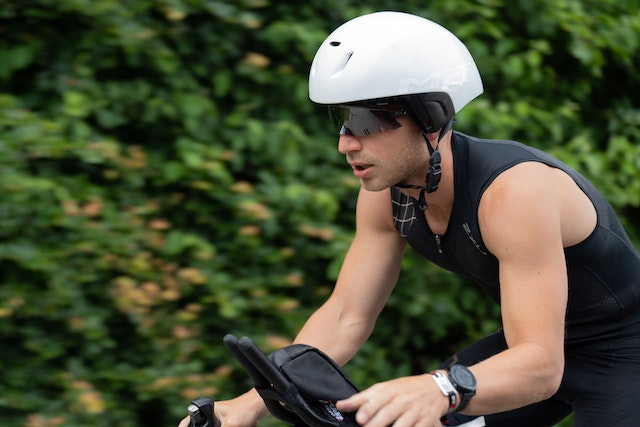A Guide to Choosing the Right Electric Bike Battery
In the realm of urban commuting, electric bikes have emerged as a sustainable and efficient solution. At the core of these innovative vehicles lies the crucial component – the electric bike battery, serving as the powerhouse for your daily rides. This guide aims to provide comprehensive insights into choosing the right battery for your commuter e-bike, covering critical aspects such as battery types, commuter bike range, battery efficiency, electric bike power, and the overall commuting energy required.
Understanding the Electric Bike Battery: Types and Technologies
Before delving into the selection process, it’s imperative to grasp the various types and technologies associated with ebike batteries.
Lithium-Ion (Li-Ion) Batteries:
- The majority of modern electric bikes utilize lithium-ion batteries due to their high energy density, prolonged lifespan, and relatively lightweight nature.
- Li-Ion batteries are instrumental in providing extended commuter bike range and ample electric bike power.
Lithium-Polymer (Li-Po) Batteries:
- Li-Po batteries, akin to Li-Ion, offer flexibility in design with a lighter and more pliable structure.
- Their adaptable form allows for diverse integration possibilities within the e-bike frame.
Nickel-Metal Hydride (NiMH) Batteries:
- Although less prevalent in contemporary e-bikes, NiMH batteries are more substantial and possess a lower energy density.
- Affordability is a key feature, but they may not match the performance and longevity of lithium-based alternatives.
Lead-Acid Batteries:
- Rarely employed in commuter e-bikes due to their weight and diminished energy density.
- While lead-acid batteries are more economical, advancements in lithium technologies have eclipsed their popularity.
Determining Commuter Bike Range: A Key Metric
Central to selecting an ebike battery is understanding the anticipated commuter bike range, influenced by various factors:
1. Battery Capacity (Ah):
- The capacity of an ebike battery, measured in ampere-hours (Ah), plays a pivotal role in determining the commuter bike range.
- Higher capacity often translates to an extended range.
2. Voltage (V):
- Voltage is a critical factor influencing the power output of the battery.
- Opting for higher voltage batteries can provide increased electric bike power, especially beneficial for traversing hilly terrains.
3. Efficiency of the Motor and System:
- The efficiency of the e-bike’s motor and overall system directly impacts how effectively the battery converts stored energy into propulsion.
- A focus on system efficiency enhances overall battery efficiency.
4. Riding Conditions:
- Terrain, wind resistance, and adverse weather conditions can significantly impact the energy consumption of your e-bike.
- Factoring in these conditions aids in evaluating your daily power requirements for commuting.
Battery Efficiency: Maximizing Every Watt
Efficiency is a pivotal aspect in ensuring the optimal performance of your ebike battery. Key considerations include:
1. Discharge and Charge Cycles:
- Each battery type has a limited number of charge and discharge cycles before experiencing performance degradation.
- Lithium-ion batteries, in particular, boast a longer cycle life compared to other variants.
2. Charging Time:
- Faster charging times contribute significantly to the overall efficiency of your e-bike.
- The consideration of charging time is integral to assessing battery efficiency.
3. Energy Recuperation (Regenerative Braking):
- Some e-bikes incorporate regenerative braking, converting kinetic energy back into electrical energy during braking.
- The inclusion of regenerative braking enhances the overall efficiency of the battery.
Electric Bike Battery Power: Achieving the Right Balance
The power of an ebike battery, measured in watts (W), directly influences the output of the motor. Achieving the right balance is critical:
1. Motor Power (Wattage):
- Ensuring alignment between the battery’s power output and the motor’s specifications is crucial.
- A powerful motor necessitates a correspondingly robust ebike battery.
2. Power Assistance Levels:
- Many e-bikes provide multiple power assistance levels, allowing riders to adjust the level of electric assistance based on preferences and energy needs for commuting.
Commuting Energy: Calculating Daily Power Requirements
Efficient commuting entails a comprehensive understanding of your daily energy requirements. Factors include:
1. Commuting Distance:
- Accurately calculating your daily commuting distance aids in estimating the battery range required.
2. Terrain:
- The terrain you traverse plays a crucial role in energy consumption, especially in hilly areas.
- Factoring in terrain variations is essential when evaluating your energy consumption.
3. Weight:
- Rider weight and any additional cargo impact the energy consumption of your ebike.
- Considering weight variables is vital when assessing daily power requirements.
4. Stop-and-Go vs. Continuous Riding:
- Energy consumption differs between stop-and-go traffic and continuous riding.
- Commuters should consider these factors when evaluating their energy consumption.
Choosing the Right Electric Bike Battery: Practical Tips
1. Assess Your Commuting Needs:
- A thorough evaluation of your daily commute, including distance, terrain, and challenges, aids in choosing the right ebike battery.
- Understanding your commuting energy requirements is integral to making an informed decision.
2. Consider Frame Integration:
- Some e-bikes incorporate batteries within the frame for streamlined design.
- Assess whether integrated batteries align with your preferences and contribute to enhanced battery efficiency.
3. Evaluate Battery Weight:
- Striking a balance between weight and range is essential.
- The weight of the battery influences commuter bike range and overall efficiency.
4. Check Compatibility:
- Ensuring compatibility with the e-bike’s motor and charging system is fundamental.
- Compatibility is a key determinant in achieving optimal battery efficiency.
5. Invest in Quality:
- While quality batteries may incur a higher initial cost, their longevity and performance often surpass the upfront investment.
- Quality contributes significantly to battery efficiency.
6. Explore Removable Batteries:
- Removable batteries offer the convenience of indoor charging.
- The flexibility introduced by removable batteries enhances overall battery efficiency.
7. Consider Future Upgrades:
- Keeping abreast of battery technology advancements is crucial.
- Investing in a slightly advanced battery ensures longevity and features, contributing to a commuter bike range.
Conclusion
In conclusion, selecting the right ebike battery for your commuter electric bike is a pivotal decision that directly influences your riding experience. By comprehending the nuances of battery types, assessing your commuting needs, and considering efficiency and power factors, you can make an informed choice. A well-matched ebike battery not only enhances your daily commute but also contributes to a sustainable and eco-friendly urban lifestyle. Whether navigating city streets or cruising through scenic routes, a reliable and efficient ebike battery ensures your electric bike remains a trusted companion on every journey, making your daily commute an empowered and enjoyable experience.
Drop a comment below and let us know:
- Which type of battery powers your daily commute?
- Any efficiency tips or hacks you’ve discovered?
- Your go-to strategies for extending your commuter bike range.
Spread the Spark:
- Found this guide electrifying? Share it with fellow e-bike enthusiasts, friends, and anyone looking to supercharge their commuting experience.
- Tag your riding buddies and invite them to join the discussion. The more, the merrier!
Let’s create a buzz around eco-friendly commuting and empower riders worldwide to make informed choices. Your insights might just be the inspiration someone needs for their next electric adventure! #EbikePowerhouse #CommuteSmart #ElectricAdventure
Kristina Grant is not just an enthusiast but a true authority on electric bikes. Nestled in the coastal beauty of Virginia, Kristina has found the perfect backdrop for her passion for electric biking. As a dedicated wife and homeschooling mom, her life revolves around family, faith, and the thrill of adventure.
Originally hailing from Ohio, Kristina's journey with electric bikes began as a curiosity and quickly evolved into a deep expertise. Her blog is a testament to her love for electric biking, combining her fascination for eco-friendly transportation with her coastal lifestyle.
When she's not cruising the beach on her electric bike, you'll find Kristina indulging in her other loves: long walks along the shore, getting lost in a good book, and cherishing moments with her loved ones. With a heart as big as her love for animals, especially cats, Kristina brings a unique perspective to the electric bike world, grounded in her strong faith in God and her dedication to a sustainable lifestyle.
Through her blog, Kristina shares her extensive knowledge of electric bikes, offering valuable insights, tips, and recommendations to fellow enthusiasts. Whether you're a seasoned rider or a newcomer to the electric bike scene, Kristina's blog is your go-to source for all things electric biking, fueled by her passion, expertise, and the scenic beauty of coastal Virginia.







